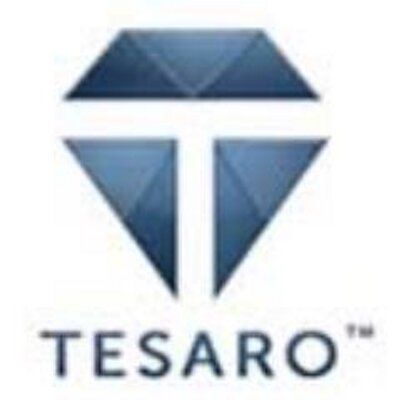预约演示
更新于:2025-05-07
Ependymoma
室管膜瘤
更新于:2025-05-07
基本信息
别名 Cellular Ependymoma、Cellular ependymoma、Cellular ependymoma (morphologic abnormality) + [46] |
简介 Glioma derived from EPENDYMOGLIAL CELLS that tend to present as malignant intracranial tumors in children and as benign intraspinal neoplasms in adults. It may arise from any level of the ventricular system or central canal of the spinal cord. Intracranial ependymomas most frequently originate in the FOURTH VENTRICLE and histologically are densely cellular tumors which may contain ependymal tubules and perivascular pseudorosettes. Spinal ependymomas are usually benign papillary or myxopapillary tumors. (From DeVita et al., Principles and Practice of Oncology, 5th ed, p2018; Escourolle et al., Manual of Basic Neuropathology, 2nd ed, pp28-9) |
关联
57
项与 室管膜瘤 相关的药物靶点 |
作用机制 PD-1抑制剂 |
在研机构 |
原研机构 |
最高研发阶段批准上市 |
首次获批国家/地区 欧盟 [+3] |
首次获批日期2021-04-21 |
作用机制 MEK1抑制剂 [+1] |
非在研适应症 |
最高研发阶段批准上市 |
首次获批国家/地区 美国 |
首次获批日期2020-04-10 |
作用机制 CDK4抑制剂 [+1] |
原研机构 |
最高研发阶段批准上市 |
首次获批国家/地区 美国 |
首次获批日期2017-09-28 |
191
项与 室管膜瘤 相关的临床试验NCT06907485
A Multicenter Study to Assess the Feasibility of Gleolan (ALA / Aminolevulinic Acid HCl) in Pediatric Brain Tumor Patients After Delayed Administration
This clinical trial focuses on pediatric patients aged 2 up to 18 years of age with a new or recurrent pediatric brain tumor, suspected to be either a high-grade or low-grade glioma, and scheduled for surgical removal. 5-aminolevulinic acid (5-ALA) is FDA-approved for improving brain tumor visualization in adults during surgery through fluorescence, enabling more complete removal of the tumor. This study aims to evaluate the feasibility of administering 5-ALA to pediatric brain tumor patients and to assess the quality of tumor fluorescence during surgery in this patient population.
For the clinical trial, the patient will orally ingest 5-ALA 6 to 12 hours before brain surgery. All study participants will be provided standard medical care for removal of the brain tumor. All children enrolled in the study will be closely monitored prior to, during, and after surgery to ensure there are no reactions to the study drug. 5-ALA can make the patient more sensitive to sunlight and direct indoor lighting, referred to as photosensitivity, and can cause a sunburn-type reaction. It is for this reason that patients will be kept in subdued light conditions for 48 hours following surgery. Study participation starts once the patient is enrolled in the study until 6-month post-surgery.
For the clinical trial, the patient will orally ingest 5-ALA 6 to 12 hours before brain surgery. All study participants will be provided standard medical care for removal of the brain tumor. All children enrolled in the study will be closely monitored prior to, during, and after surgery to ensure there are no reactions to the study drug. 5-ALA can make the patient more sensitive to sunlight and direct indoor lighting, referred to as photosensitivity, and can cause a sunburn-type reaction. It is for this reason that patients will be kept in subdued light conditions for 48 hours following surgery. Study participation starts once the patient is enrolled in the study until 6-month post-surgery.
开始日期2025-06-01 |
申办/合作机构 |
NCT06639607
Phase 1/2 Trial of PEP-CMV + Nivolumab for Newly Diagnosed Diffuse Midline Glioma/High-grade Glioma and Recurrent Diffuse Midline Glioma/High-grade Glioma, Medulloblastoma, and Ependymoma (PRiME II)
This is a multisite, phase I/II clinical trial in children and young adults with newly-diagnosed high-grade glioma (HGG), diffuse midline glioma (DMG) and recurrent HGG/DMG, Medulloblastoma (MB), or ependymoma (EPN) to determine the safety, immunogenicity, and efficacy of a CMV-directed peptide vaccine plus checkpoint blockade.
开始日期2025-05-01 |
申办/合作机构 |
NCT06323408
Prospective Collection of Clinical and Imaging Data, Radiotherapy Planning and Biomaterials for Integrated Analysis of Therapy Response and Resistance and Detection of Molecular Targets in Adolescents and Young Adults With CNS Tumors
The treatment of adolescents and young adults (AYA, 15 to 39 years) with malignant intra-axial CNS parenchymal tumors such as IDH-mutated gliomas, medulloblastomas and ependymomas is still not curative in all cases. The tumor biology and clinical needs to diagnose and treat these tumors are comparable across all age groups, so an integrated treatment environment overseen by adult and pediatric neuro-oncology specialists seems promising to leverage synergisms and advance diagnostic and therapeutic development in these tumors. A comprehensive, prospective and integrated biomaterial and imaging-based pipeline for the multi-faceted evaluation of AYAs has not yet been established for AYA patients with brain tumors in Germany. Current diagnostic platforms neglect the integrative processing of data from MRI and FET-PET imaging, radiotherapy plans, tumor tissue, liquid biopsies and clinical data as well as prognostic markers. A prospective AYA pipeline can therefore enable a better understanding of the aforementioned high-risk CNS malignancies and promises clinical advances for AYA patients and the clinical and scientific research landscape.
开始日期2025-05-01 |
100 项与 室管膜瘤 相关的临床结果
登录后查看更多信息
100 项与 室管膜瘤 相关的转化医学
登录后查看更多信息
0 项与 室管膜瘤 相关的专利(医药)
登录后查看更多信息
7,087
项与 室管膜瘤 相关的文献(医药)2025-12-01·Child's Nervous System
Beyond the expected: a supratentorial ependymoma imitating a meningioma
Article
作者: Shamim, Muhammad Shahzad ; Sohail, Hafsah Binte ; Mushtaq, Naureen ; Ahmed, Noman
2025-12-01·Child's Nervous System
5-Aminolevulinic acid (5-ALA) in paediatric brain tumour surgery—a systematic review and exploration of fluorophore alternatives
Review
作者: Collins, Victoria G ; Yahya, Qalisya Binti ; Kaliaperumal, Chandrasekaran ; Liistro, Marianna ; Kanodia, Charvi
2025-12-01·Child's Nervous System
Subdural hematoma as a complication of endoscopic third ventriculostomy in a pediatric patient: a case report and literature review
Article
作者: Sagarribay, Amets ; Matos, Mário ; Sobrinho, Rui ; Azevedo, Miguel ; Fernandes, Rafael Tiza ; Forte, Dalila
49
项与 室管膜瘤 相关的新闻(医药)2025-03-06
·药明康德
▎药明康德内容团队编辑
编者按:根据世界卫生组织的统计,全球罕见病患者总数超过3亿——每不到20人中就有一人罹患罕见病。遗憾的是,目前仅有不到5%的罕见病拥有有效治疗手段。作为创新的赋能者、客户信赖的合作伙伴以及全球健康产业的贡献者,药明康德正通过其独特的CRDMO业务模式,助力客户开发更多罕见病新药,为全球病患带来希望。近日,药明康德内容团队采访了多位罕见病领域的全球领袖,希望通过这一系列访谈,与各位读者朋友分享这些嘉宾的洞见,提升公众对罕见疾病的认知。
Annette Bakker博士现任儿童肿瘤基金会(CTF)主席兼首席执行官。她曾领导杨森(现称强生创新制药)的肿瘤学团队,并担任Siena Biotech肿瘤研发部门负责人。在Siena Biotech任职期间,她成功协助创立了神经肿瘤学部门,并统筹多项国际大型研究项目。过去十年来,她专注于神经纤维瘤病(NF)治疗方案的研发,并带领CTF构建了全球患者研究网络,推动新药审批及临床试验,不仅为NF患者带来希望,也加深了公众对该疾病的认识。2020年,随着首款NF治疗药物Koselugo获批上市,药明康德内容团队邀请Bakker博士参加神经纤维瘤病公益论坛,共同探讨罕见病新药开发“不走寻常路”的研发模式。近日,在NF第二款疗法获批之际,药明康德内容团队再次邀请Bakker博士莅临交流,分享患者组织在应对罕见病药物治疗挑战中的关键作用与成功合作要素,并呼吁各界积极推动罕见病药物研发。
药明康德内容团队:Bakker博士您好,非常高兴见到您!对于神经纤维瘤病患者来说,CTF已经成为推动药物研发的中坚力量。从您的角度来看,患者团体在促进科研进展和加速新疗法开发过程中,其角色究竟经历了哪些演化呢?
Annette
Bakker博士:非常感谢你们的邀请!能通过药明康德内容平台与大家进行交流,我感到非常荣幸。我始终坚信,我们以及类似的研究基金会在推动医学进步中扮演着至关重要的角色。举个例子,在与阿利斯康(AstraZeneca)和默沙东(MSD)交流时(这两家公司共同开发出治疗1型神经纤维瘤病[NF1]的首款疗法Koselugo),我问他们为什么选择与CTF合作。他们给出的答案非常明确:CTF处于患者和研究界之间的关键位置,并深得各方信赖。CTF已经与患者、临床医生、研究人员、医药公司以及监管机构建立了牢固的联系。
他们把我们视为协调者和合作伙伴,而我们则肩负着一项独特的道义责任——确保捐赠者的每一分钱都真正用在患者的治疗上。这种信念更坚定了我们在NF1和神经鞘瘤病(Schwannomatosis)研发生态中所承担的重要使命。
药明康德内容团队:在过去的五年中,我们已经见证了两款治疗NF的药物获批。您认为未来这一领域还会有哪些突破性的进展呢?
Annette Bakker博士:目前,这两款获批治疗NF的药物均用于丛状神经纤维瘤的治疗,其中一款仅适用于儿童,而另一款则同时适用于儿童和成人。虽然这一进展意义重大,但它仅针对NF的一种类型。治疗NF,和很多其它罕见病一样,需要面对疾病异质性的固有挑战。这些疾病通常影响多个器官,病征多样且逐步渐进。每种临床表型几乎都像一种独立的疾病,意味着需要批准与之相对应的不同药物。举例来说,我们见证了Koselugo首次获批用于丛状神经纤维瘤,随后SpringWorks的Gomekli也获得了批准。我们当前的目标是让NF和神经鞘瘤病的所有临床表型皆有相应的药物批准,包括皮肤神经纤维瘤、前庭神经鞘瘤、脑膜瘤、室管膜瘤、疼痛管理等多个领域。目前,在美国进行中的临床试验已超过60项,涉及NF各个方面的探索。
值得一提的是,罕见病平台篮式试验(platform basket trial)的推出无疑为这一领域带来了令人振奋的前景。目前,我们正开展两项平台篮式试验,另有一项试验正在接受欧洲药品管理局(EMA)的评估。借助这些试验,我们能够进行长期、持续的临床研究——甚至可能持续长达十年。医药公司在完成药物早期研发后,就可以将其纳入试验。这种方法有望大幅加快药物开发进程,从而破解罕见病研究中的一大关键难题。
图片来源:123RF
药明康德内容团队:CTF已经建立了许多成功的合作关系。在您看来,哪些关键因素促成了这些合作关系的建立?
Annette Bakker博士:我认为伙伴关系其实很简单:它就是人与人之间的合作。当你把合适的人聚在一起,组成一个志同道合的联盟,并且大家都愿意走出自己的舒适区时,就有可能迎来突破性的进展。这正是把研究成果转化为临床效益的关键所在。
例如,我们的Synodos联盟把患者、临床医生、研究人员、医药公司代表以及美国国家转化研究促进中心(NCATS)等组织的成员聚集在一起,共同应对NF1和神经鞘瘤病的挑战。正是因为有了患者的参与,每个人才会有动力突破传统的界限。另一个成功的尝试是我们的NF数据门户网站。通过整理和共享未发表的数据,研究人员可以直观地看到哪些方法奏效、哪些无效,从而加快对NF的理解,避免重复劳动。事实证明,这种开放共享的模式极为宝贵。这些例子表明,有效的合作伙伴关系建立在对创新的共同承诺和为改善患者护理而真心投入的基础之上。
图片来源:123RF
药明康德内容团队:鉴于罕见病药物开发所面临的独特挑战,您认为我们如何才能克服这些障碍,确保每位患者都能获得创新疗法?
Annette Bakker博士:这是个极其重大的问题。在我看来,其中一个主要挑战在于,即便我们成功开发出针对NF的药物原型,其适用范围也仅限于一种相对较常见的罕见病。而实际上,目前已知的罕见病大约有1.1万种,我们无法对每一种疾病都采用同样的开发模式。我们需要开始思考如何将这些罕见病进行分类,让它们都能共享类似的治疗方式。比如,我们是否可以将RAS通路异常相关疾病(rasopathies)、肌肉病变以及其他具有相似病理机制的疾病归为一组,以一种更吸引医药行业的方式开展大规模且富有意义的临床试验?这正是我所希望带来的影响。目前,我们正与欧洲制药工业协会联盟(EFPIA)、赛诺菲(Sanofi)、NCATS以及Myhre综合征基金会等合作伙伴携手,共同探索如何对罕见病进行高效分类。
另一个关键领域,我称之为“再定位困境”。受制于商业和市场因素,许多医药公司不得不搁置那些原本前景看好的产品。例如,当一家拥有多条管线的生物技术公司被大型医药公司收购时,收购方往往只会继续推进其中一个项目,而其他项目则被闲置——其中甚至有些项目已处于临床后期阶段,并拥有完整的FDA审评数据。我们迫切需要一种创新的商业模式来拯救这些有价值的项目,确保用于IND申请的数据不被浪费,并推动这些药物重新进入商业开发和临床应用,从而避免不必要的重复研究。
要解决这些问题,政策制定者、法律专家、金融专业人士和药物发现科学家等各方必须紧密合作。我期待FDA能与罕见病团体展开真正深入的对话,确保我们不会无意中“扼杀”那些依然具备潜力、能够惠及患者的药物。只有共同应对这些挑战,我们才能迎来一个让每位罕见病患者都能获得创新且有效疗法的未来。
图片来源:123RF
药明康德内容团队:感谢您的宝贵洞见。在我们结束这次交流之前,您能否分享一下您对NF研究和药物开发领域未来关键技术的展望?
Annette Bakker博士:当前亟待突破的关键领域之一在于提高NF疾病进展预测的准确性。现有数据显示,大约10%至15%携带NF良性肿瘤的患者,其肿瘤最终可能转化为高度恶性肉瘤,但目前我们尚无法准确识别出哪些患者将面临这一风险。为此,我们正大力投资于液体活检和血液标记物的研究,以便更准确地区分良性肿瘤、可疑病变和恶性周围神经鞘瘤(MPNST)。一旦这些标志物得到验证,它们将成为临床决策中的重要工具。此外,我们还计划将临床和液体活检数据与先进的成像技术相结合,开发人工智能方法,精准预测哪些肿瘤存在恶变风险,从而为制定个体化治疗策略——无论是启动积极的化疗,还是采取密切监测——提供坚实依据。
此外,新技术在揭示全新生物学机制方面展现了巨大潜力。鉴于生物通路的复杂性,近年来空间组学、转录组学和蛋白质组学领域的突破,使我们能够深入解析肿瘤内的亚细胞群体、探索肿瘤微环境,并发现全新的生物标志物和治疗靶点。同时,我们还致力于探究新陈代谢、神经元与肿瘤之间的交互作用以及分泌组的功能。将这些研究成果与诸如小分子药物、蛋白降解靶向嵌合体(PROTAC)、去泛素酶靶向嵌合体(DUBTAC)、激酶抑制剂、生物制品、核苷酸以及创新药物递送系统等新兴治疗策略相结合,均展现出广阔的应用前景。该领域的活力令人振奋,我深信这些突破将推动新靶点的发现,并促成针对NF的变革性治疗方案的研发。
▲欲了解更多前沿技术在生物医药产业中的应用,请长按扫描上方二维码,即可访问“药明直播间”,观看相关话题的直播讨论与精彩回放
参考资料:
[1] Annette Bakker.Retrieved March 6, 2025, from https://www.newyorkbio.org/board/annette-bakker
[2] Children’s Tumor Foundation.Retrieved March 6, 2025, from http://www.ctf.org/
免责声明:药明康德内容团队专注介绍全球生物医药健康研究进展。本文仅作信息交流之目的,文中观点不代表药明康德立场,亦不代表药明康德支持或反对文中观点。本文也不是治疗方案推荐。如需获得治疗方案指导,请前往正规医院就诊。
版权说明:本文来自药明康德内容团队,欢迎个人转发至朋友圈,谢绝媒体或机构未经授权以任何形式转载至其他平台。转载授权请在「药明康德」微信公众号回复“转载”,获取转载须知。
分享,点赞,在看,聚焦全球生物医药健康创新
2025-02-08
·丁香园
5
丁香园神经科讨论群(498)
@所有人
快问答:患者 27 岁女性,间断头疼 3 个月,住院行 DSA 检查如图,怎么诊断?
A.AVM畸形
B.室管膜瘤
C.胶质瘤
D.颈动脉海绵窦瘘
E.烟雾病
F.海绵状血管瘤
都不在海绵窦区,大脑中动脉M1供血,这么粗大的引流静脉。
是的,所以为什么要选 D
错把引流静脉当动脉
9:30
有粗大的回流静脉,动静脉畸形,选 A
未见扩张的静脉,所以,不支持海绵窦瘘
DSA动脉期出现一血管团,有引流静脉,考虑A
肿瘤可以富血供,但不会有异常的血管团,烟雾病有大血管闭塞,海绵状血管瘤dsa不显影,所以这几项可以排除,颈动脉海绵窦瘘是动脉和海绵窦直接交通,血管团的部位不是海绵窦
根据患者年轻,异常头痛,DSA上的引流静脉,判断为A
AVM,介入onxy胶栓塞就行
@所有人 公布答案:
AVM 在形态学上由供血动脉,异常血管团(巢)和引流静脉三部分组成;有些是动脉直接与静脉沟通(瘘型),在瘘口处血管异常扩张成瘤样。(第 2 版《王忠诚神经外科学》P770)
本例患者 DSA 发现脑深部血管畸形,位于深部及功能区,由颈内动脉供血。
所以 A 正确,我看大部分群友都答对了。
还有一些群友选了 D,具体错误选项的详细解析见:https://dxy.pub/67RuZp
2024-12-04
BIRMINGHAM, AL, USA I December 4, 2024 I
Treovir, Inc.
announced today the opening of a Phase 2 trial testing G207, an oncolytic HSV immunotherapy, in pediatric brain tumor patients.
G207 is being evaluated for efficacy in a single-arm Phase 2 study of 30 pediatric patients with high grade gliomas at first recurrence, a uniformly fatal form of pediatric brain tumors with no currently approved therapies. The Phase 2 trial will evaluate efficacy (overall survival) and confirm safety of G207, an oncolytic HSV virus. The trial is being conducted in collaboration with the Pediatric Brain Tumor Consortium, a National Cancer Institute (NCI)-supported consortium comprising 15 pediatric cancer centers, and is currently enrolling patients at Memorial Sloan Kettering Cancer Center and The University of Texas MD Anderson Cancer Center. NCI is part of the National Institutes of Health. Treovir anticipates that additional US and Canadian sites will open for enrollment in late 2024 and 2025.
ClinicalTrials.gov ID
NCT04482933
; PBTC 061
www.pbtc.org
“With the opening of the Phase 2 study Treovir expects to expand on the positive data obtained from the Phase 1 study in pediatric patients completed in 2021”
stated Michael Christini, CEO of Treovir.
“There are no approved therapies for pediatric glioma and we anticipate that Phase 2 data will ultimately be used in support of a BLA filing for market approval of G207 offering a treatment option for patients in this critically underserved therapeutic area.”
About
Treovir, Inc.
Treovir is a clinical-stage biopharmaceutical company focused on development and commercialization of oncolytic Herpes Simplex Viruses (oHSV) for treatment of malignant brain tumors in children. oHSV are genetically engineered viruses that are able to infect and kill malignant brain tumor cells, releasing tumor cell debris that elicits a potent immune-related cellular immunotherapy response. Treovir has been granted Fast-Track status for development of G207 by the FDA. G207 also has orphan drug designations for gliomas and ependymomas, medulloblastomas and primitive neuroectodermal tumors in the US and for gliomas in the EMA.
Brain tumors are the most common solid tumors in children, and aggressive types like glioblastoma have an extremely low survival rate, as low as 10 percent five years after diagnosis. Malignant high-grade glioma accounts for 8 to 10 percent of pediatric brain tumors and survival rates have not improved in 30 years. The median life expectancy of recurrent high-grade glioma is only 5.6 months.
In the Phase 1 dose-escalation study published in the New England Journal of Medicine in 2021, 12 pediatric patients 7 to 18 years of age with progressive high-grade glioma received a single intratumoral infusion of G207 alone or G207 in combination with radiation. No dose-limiting toxic effects or serious adverse events were attributed to G207 by the investigators. Radiographic, neuropathological, or clinical responses were seen in 11 patients. The median overall survival for patients in the trial was 12.2 months (95% confidence interval, 8.0 to 16.4) which was more than double the typical survival rate for children with recurrent high-grade glioma and 5 of the 12 patients survived longer than 18 months, surpassing the expected survival for newly diagnosed children with high-grade glioma. Additionally, G207 markedly increased the number of tumor-infiltrating lymphocytes for at least nine months after infusion, effectively turning immunologically “cold” tumors “hot,” an indication that the patient’s immune system can be activated to further eliminate the tumors.
NEJM 384(17): 1613-1622
;
ClinicalTrials.gov ID
NCT02457845
In addition to the Phase 2 study, G207 is being evaluated for safety in a Phase 1 clinical trial in children with recurrent or progressive malignant cerebellar gliomas or medulloblastomas. Treovir is providing G207 for the trial that is being conducted at MD Anderson Cancer Center and supported in part by an FDA grant awarded to Gregory K. Friedman, MD. Dr. Friedman is the principal clinical investigator for both trials.
ClinicalTrials.gov ID
NCT03911388
Treovir is also in the early stages of planning a Phase 1/2 clinical study in newly diagnosed brain tumor patients beginning in 2026.
SOURCE:
Treovir
快速通道临床2期临床1期免疫疗法孤儿药
分析
对领域进行一次全面的分析。
登录
或

生物医药百科问答
全新生物医药AI Agent 覆盖科研全链路,让突破性发现快人一步
立即开始免费试用!
智慧芽新药情报库是智慧芽专为生命科学人士构建的基于AI的创新药情报平台,助您全方位提升您的研发与决策效率。
立即开始数据试用!
智慧芽新药库数据也通过智慧芽数据服务平台,以API或者数据包形式对外开放,助您更加充分利用智慧芽新药情报信息。
生物序列数据库
生物药研发创新
免费使用
化学结构数据库
小分子化药研发创新
免费使用






